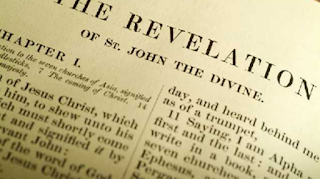A contrast of feasts (Esther's first feast)
The book of Esther is one filled with feasting. The book begins with a massive feast (1:3) which led to a smaller separate feast (1:5). King Xerxes was the host of these first two grand feasts, and his wife, Queen Vashti is a host of yet another feast (1:9). After Xerxes failed campaign in Greece he returns to his throne upset, his advisors create a beauty pageant to cheer Xerxes up, and what does Xerxes do when he favors his new Queen Esther? You guessed it, he throws a feast (2:18)! The book of Esther itself gives a detailed recap and explanation of the origins of the "feast" of Purim.
One way to see the expressed organization of the book of Esther is to view each feast as a "subsection". In this way, we can see the emphasis of each feast, and remember the key events throughout the book of Esther. Below is an example of this organization:
- Feast of Xerxes' celebration (1:3)
- Feast of Xerxes capital (1:5)
- Feast of Vashti's royal women (1:9)
- Feast of Esther's Coronation (2:18)
- Feast of Esther's first petition (5:4)
- Feast of Esther's final petition (7:1-2)
- Feast of Deliverance (8:17)
When examining Esther's feast in chapter 5 I've notice a few interesting points of comparison between this feast and the other feasts. This shows that Esther took great care and intentionality in preparing her feast. She didn't go into the endeavor of seeking Xerxes' favor by "winging it". She took 3 days to prepare herself and her maidens (no doubt who would have helped with the feast). Without further delay, here are a few notes that contrast Esther's first feast, with the previous feasts that took place in the book.
 |
| "The Feast of Esther" by Johannes Spilberg |
*Esther's first feast was prepared for only two people.
While previous feasts were larger gatherings. Xerxes feasts were for his administrative leaders, and for his empire. Vashti's feast was for the women of the palace, which at bare minimum would have been hundreds of people. Esther's coronation feast was also a large event which was an official government holiday. This made the setting more intimate, more personal, and in a way, more special than even those other feasts. Esther's feast wasn't designed to bring pleasure to the empire, relief of taxes, or curry favor with the common people. Esther's feast was focused, it was direct. Esther's feast was pointed and fixated on winning the favor of one man, and ending the will of another man.
*Esther's first feast came after fasting.
Only Esther's feast comes after a time of fasting. Self-denial was a massive component to Esther's motivation. She had to deny her own instinct of self-preservation as she entered Xerxes court. While Xerxes is introduced early on in Esther as one who follows up feasts (1:3) with more feasts (1:5), Esther here fasts rather than feasts. She sets aside time and energy to prepare for the task ahead. In a setting that is described by abundance so often, Esther sets aside time for restraint. Esther was abounding in her beauty, Xerxes was overflowing in his riches, and Haman had profuse prosperity. With some many material bounty, Esther's fasting stands out as a moment of particular contrast.
*Esther's first feast wasn't a celebration for her own enjoyment.
Esther didn't see these feasts as moments of celebration. While the previous feasts were all for a celebratory reason, this feast was different. Her people are doomed to death according to royal decree. Her husband has signed the death warrant for herself, and everyone of similar lineage. Esther's own adopted father, Mordecai, a man whom she respected and obeyed was the personal nemesis of Haman. Haman would be at this feast. How could Esther enjoy this feast? How could she celebrate amidst the pleasures afforded at the feast, knowing the destruction that awaited her and her people? This feast wasn't for her pleasure, this feast was about accomplishing a plea for her people.
*Esther's first feast is the first feast that needed permission.
Every other feast up until chapter 5 had been conducted at the whim and pleasure of Xerxes. It was either Xerxes or Vashti who had commanded the feasts up until chapter 5. Esther's feast is one that she sought the king's permission to host. The sequence of events is something noteworthy in that Esther didn't begin the feast, and then send an invitation to King Xerxes via a servant. We've already seen in Esther 4 servants being used as message carriers. Esther takes the personal responsibility and risk of going to Xerxes personally, and asks his permission for both he and Haman to attend a feast in their honor. A theme here is that the feasts in the book of Esther occur according to the pleasure of the king. Esther seeks the king's favor and submits to this theme to accomplish her goals. She didn't riot, protest, or attempt an overthrow of the government. She didn't demand that Xerxes conform his laws and sense of legality based on her morality. Esther sought to pursue her plea for the life of her people by submitting to the patterns of behavior that were already established in Persian culture and law.
I'm looking forward to where we are next led in our study of the book of Esther!



Comments
Post a Comment